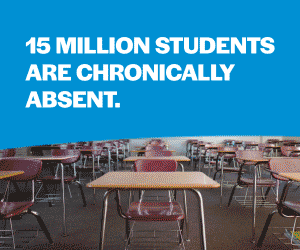 Richardson ISD has recently opened two early learning childcare centers for the families of teachers and other employees, and is planning a third. RISD Superintendent Tabitha Branum says the benefit has served as a recruitment and retention tool.
Richardson ISD has recently opened two early learning childcare centers for the families of teachers and other employees, and is planning a third. RISD Superintendent Tabitha Branum says the benefit has served as a recruitment and retention tool.
With teacher shortages still plaguing school districts nationwide, district leaders are taking creative approaches to enhance their benefits and compensation packages in an effort to attract more young teachers. And they’re doing so while being mindful of demographic headwinds that could further complicate talent management in the near future.
In fact, it’s time to revamp the value proposition for attracting the next generation of K-12 employees, explains Nicole Johnson, managing director of the higher education and K-12 practice at Gallagher Benefit Services, Inc., an employee benefits and human resources consulting and actuarial firm.
“In the coming years, we are watching and waiting for a significant wave of retirements,” she says. “Now is the time to revitalize your recruitment strategy to hire and promote the next generation.”
Texas two steps
The war for talent is playing out deep in the heart of Texas, where two school systems have made progress with strategic plans that are resonating with younger educators. The Richardson Independent School District (RISD), located north of Dallas, opened two child-learning academies with 140 seats this past school year to ease the work-life balance for 5,700 employees, which include 2,700 teachers.
 Richardson ISD Superintendent Tabitha Branum
Richardson ISD Superintendent Tabitha Branum
“We were thinking about our child learning academies as a recruitment and retention tool for all employee types,” says RISD Superintendent Tabitha Branum.
While benefits provide intangible magnets for drawing talent, money also speaks volumes. IDEA Permian Basin in West Texas, a high-performing public charter K-12 school system with two academies in Odessa and one in Midland, will invest nearly $1.8 million over the next two fiscal years to recruit, develop and retain high-quality educators.
The plan includes $10,000 signing bonuses for eight new teachers, 12 regional teacher mentor stipends at $1,500 each, 24 teacher incentive allotment stipends of $10,000 each and tuition reimbursement of $5,250 each for five co-teachers working toward obtaining a bachelor’s degree who help seed the new-talent pipeline.
“We want to get at least two to three high-quality candidates in front of our principals to make sure that they have the most qualified and highest performing teacher in front of our scholars every single day, all day long,” says Annette Macias, Ph.D., IDEA’s executive director. Several candidates who interviewed for IDEA’s college prep academy in Midland said they applied in part because of the financial incentives.
These initiatives, along with Permian Basin’s nurturing culture and high-impact professional development, seek to make IDEA a place where teachers can grow and thrive over a long career. Since 2000, IDEA Public Schools has grown into a national network of tuition-free K-12 public charter schools and serves nearly 87,000 college-bound students in 143 schools across Texas and its affiliates.
Fertile ground
Another family-friendly effort to draw in younger talent is under way in the Nashville area. Wilson County Schools (WCS) has made its mark as one of just two school districts in Tennessee that offers fertility benefits to its employees through Progyny, a global leader in women's health and family building solutions. The other is Metro Nashville Public Schools, 34 miles west of WCS.
 Wilson County Schools Deputy Director of Human Resources Rebecca W. Owens
Wilson County Schools Deputy Director of Human Resources Rebecca W. Owens
Since the program’s inception, which has generated 121 inquiries, eight babies have been born from 27 implantations. In addition, there have been 16 insurance claims filed for a variety of treatments including traditional invitro fertilization (IVF), IVF freeze, frozen reproductive urology, fertility preservation, donor and surrogacy, embryology and storage.
Attracting additional staff
While teachers are at the forefront of RISD’s talent shortage, Branum notes that the school district also competes with private industry to hire other staff such as classroom aides, special-education paraprofessionals, therapists and custodians. Branum says these employees were “having a profound impact both in supporting teachers and students, and they did not have access to high quality childcare.”
Young families may have to pay out of pocket just to have a child because they don’t have enough days accrued to take parental leave. “If they want to stay home with their baby for six,10 weeks or 12 weeks, they are actually owing the district money for being part of that precious few first few weeks of a child’s life,” she explains.
 An early learning childcare center in Richardson ISD
An early learning childcare center in Richardson ISD
“We have a 100% retention rate for staff members who have used our child learning academies for childcare,” she reports. One educator who had been in the district for 15 years told Branum she continues to stay because the child learning academy program helped prepare her children for pre-K, while giving her family significant financial savings. “She said it’s the best thing to happen in our district.”
Bruce Shutan is a contributor to DATIA K12 and a freelance writer based in Portland, Oregon.


























